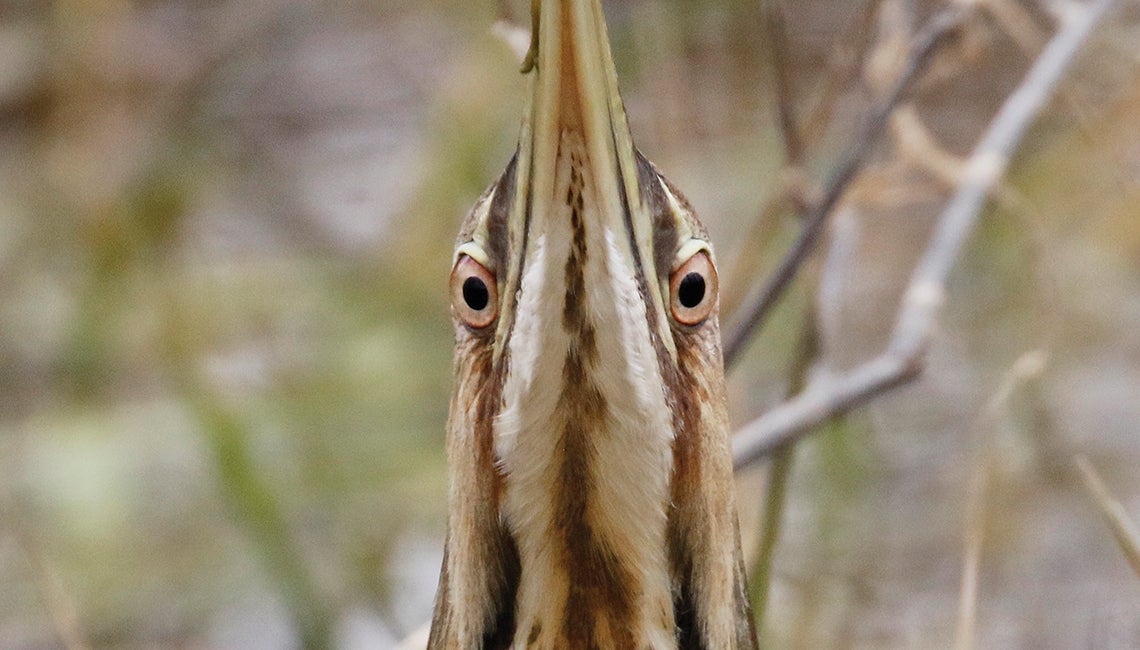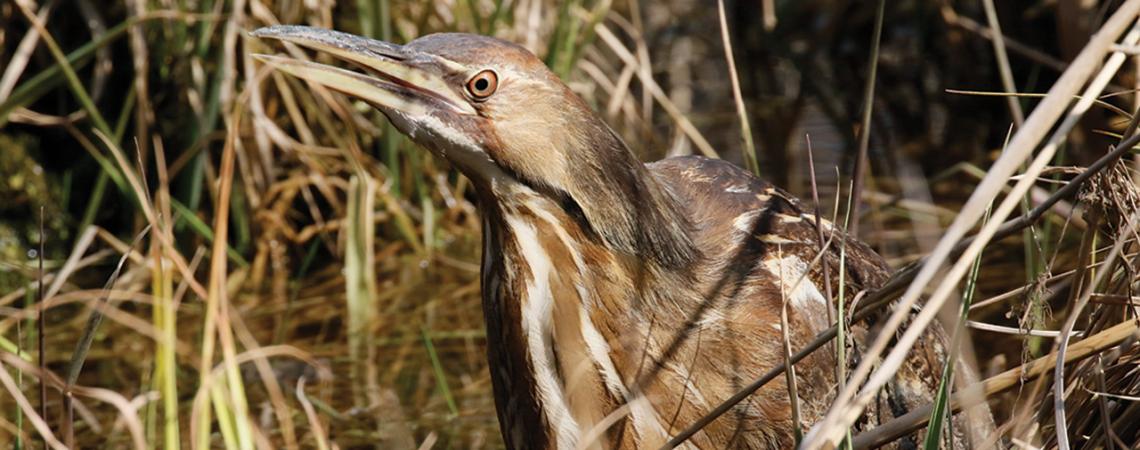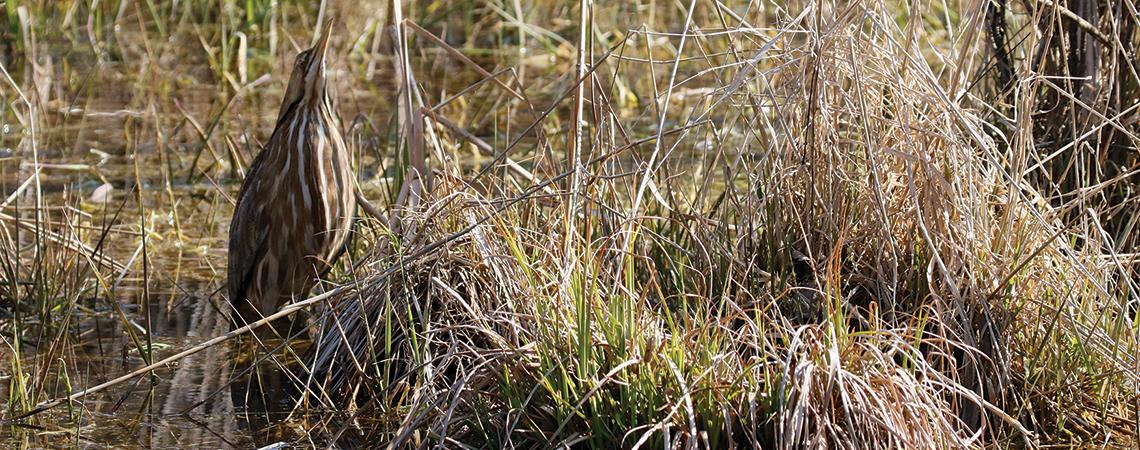I don’t consider myself an avid birder, but I understand enough about Ohio birds to know when something unusual shows up. Serendipity struck last year about this time when I came across an American bittern in a small wetland on private property near my home in north-central Ohio.
A sizeable bird, measuring 2 feet tall with a 31/2-foot wingspan, it must have heard me coming. It was already “frozen” in its hiding-in-plain-sight pose when I saw it standing just a few feet from the swamp’s edge in shallow water near some cattails. The bird had compressed its body and was pointing its stout bill skyward. “Nothing to see here,” it seemed to say. “I’m just another marsh reed. Move along…”
American bitterns occupy large open wetlands, like the Ottawa National Wildlife Refuge.
American bitterns are not easy to spot, for two reasons. First, there aren’t very many of them — they’re state-endangered. Second, they are masters of camouflage. The bird kept its heavily streaked breast turned toward me at all times, rotating slowly as I moved back and forth for a better camera angle.
It would even sway slightly from side to side, as a reed does in the wind. But there was no wind that particular morning, which made the bird’s actions look a little ridiculous, as if he or she — the sexes appear similar — were a little tipsy. Nevertheless, the bittern continued its charade for more than two hours, convinced I couldn’t see it from a mere 20 feet away.
Another reason the bittern was likely reluctant to flush and fly is that it was no doubt feeding on the dozens of leopard frogs that were breeding in a watery springtime amphibian orgy just a few yards away. As a result, I’ve never had a more cooperative, accommodating wildlife photo subject.
As if all that behavior wasn’t bizarre enough, American bitterns have one more unique feature: They make a call that is other-worldly. Usually heard at dawn, dusk, or even after dark during spring or early summer, it is a deep, slow, resonant, repetitive “pomp-er-lunk” or “oonka-choonk” that can carry a great distance. Some ornithologists have described the sound as a pump operating underwater, earning the bird its nickname: thunder-pumper. The sound is worth going online to hear; I suggest the Cornell Lab of Ornithology website.
The American bittern I encountered last April is the only one I’ve ever spotted in the wild, but I hope it’s not my last. They are usually a bird of large open wetlands, such as Ottawa National Wildlife Refuge or the adjacent Magee Marsh Wildlife Area, east of Toledo. Both of those refuges are located along the Lake Erie shoreline and make up the largest wetland complex in Ohio. During migration, American bitterns can drop into smaller wetlands anywhere in the state, so keep your eyes and ears open this spring.
The wild world is a constant stage of changing natural, ephemeral scenes. That’s part of the fascination of the outdoors — you never know quite what you’ll find. You just have to get off the couch long enough to discover what’s out there. If possible when you go, take a child or grandchild along.
W.H. Chip Gross is Ohio Cooperative Living’s outdoors editor and a member of Consolidated Cooperative.











